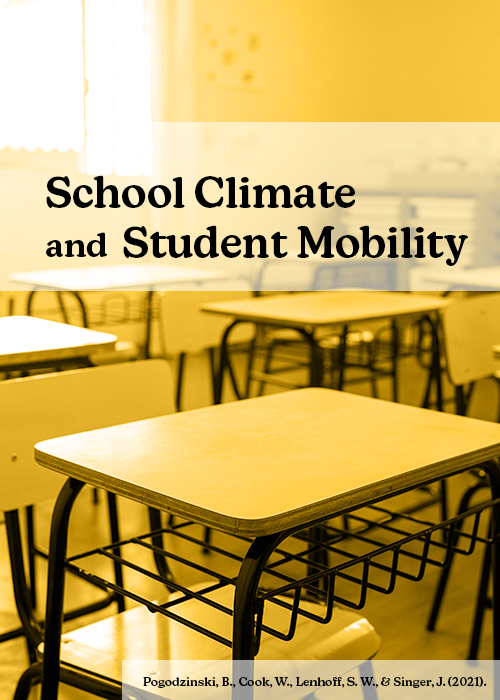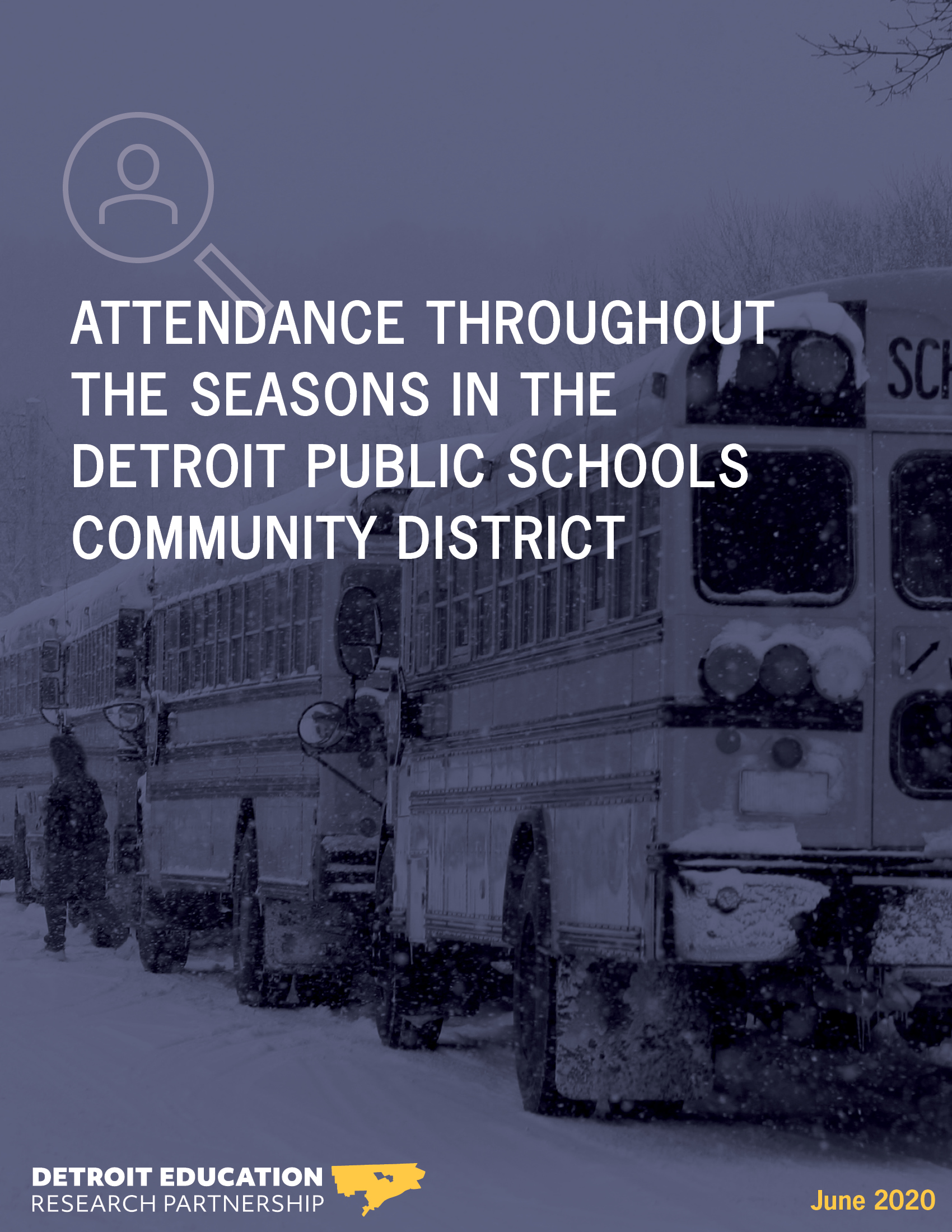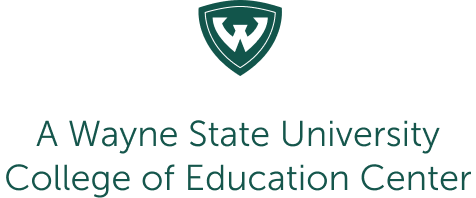Topic: Transportation
The Role of School- Based Transportation in School Choice: Evidence from Detroit
In school choice systems, many families face geographic constraints. Yet, there is limited evidence on the association between school-based transportation and students’ school choice, especially in fragmented transportation contexts. Using unique data on Detroit kindergarten students’ eligibility and access to school-based transportation, we find that students with access to a bus at a school—either a traditional or shuttle-style bus—were 4-5 percentage points more likely to enroll in that school. The association was greater for traditional buses in higher-crime neighborhoods and for shuttle-style buses for farther-away choices. We did not find that this association differed by block-group-level household car ownership. Our findings suggest that school-based transportation can increase school choice access, depending on policy design and contextual factors. This report was co-published with the National Center for Research on Education Access and Choice (REACH).

The Role of School-Based Transportation in School Choice: Evidence from Detroit
From our 2023 Association for Public Policy Analysis & Management (APPAM) conference presentation on the relationship between School Choice and student transportation options offered in and around Detroit.

School Transportation Mode and Student Attendance Across Schools of Choice
The availability and reliability of school transportation is essential for regular student attendance at school. Yet, school transportation resources are stretched for both families and school districts in cities with widespread school choice, where students’ residences do not determine where they enroll in school. This study provides some of the first evidence on how Detroit students get to school. Going beyond eligibility for the school bus, we use linked survey and administrative data to determine how students get to school, the student and school characteristics associated with riding the school bus, and how mode of transit is associated with attendance.

Why Students Miss School and What You Can Do About It – DPSCD Principal Academy, 2023
Our presentation for the 2023 DPSCD Principal Academy on the complex and intersecting causes of chronic absenteeism within Detroit schools. Included are policy recommendations for how to best support families and students in efforts to improve attendance.

The State of Detroit Schools, Students, and Families
This presentation was given in a series of State of the Schools events organized by our partner 482Forward.

Beyond the Bus: Reconceptualizing School Transportation for Mobility Justice
This essay combines an ecological perspective with a mobility justice theoretical framework to reconceptualize the relationship between school transportation and educational access. Authors Sarah Winchell Lenhoff, Jeremy Singer, Kimberly Stokes, James Bear Mahowald, and Sahar Khawaja document the problem of “getting to school ”that is at the intersection of students’ family, community, and social contexts and how it goes beyond whether there is a reliable mode of physical transportation. Bringing together a historical analysis of the policy landscapeand interview data from parents and students in Detroit, they find that school transportation problems reflect the unequal political, social, and economic context in which families navigate enrollment and attendance. They discuss how policymakers can advance mobility justice in school policy by equitably distributing transportation resources, engaging students and parents as experts in developing and communicating transportation policy, and using institutional power to remedy structural barriers to educational access.

School Transit and Accessing Public School in Detroit
Students in the Detroit Public Community Schools District (DPSCD) have the highest rate of chronic absence (missing 10% or more of school days) among large districts in the United States. Additionally, students in DPSCD are among the poorest students in the country, often lacking access to reliable personal transportation or public transit to facilitate getting to school. Although DPSCD offers school-sponsored transit, only 30% of K-8 students were eligible for such transit in 2018-19. Through the use of multilevel modeling, we sought to identify the association between eligibility for school-sponsored transit and attendance. Our findings indicated that there was a negative association of small magnitude between eligibility for school sponsored transit and school attendance. This counterintuitive finding may highlight the fact that transit eligibility is not sufficient to mediate the negative relationship between student poverty and attendance, and transit eligibility does not guarantee regular use of school-sponsored transit.

School Climate and Student Mobility
School choice has been accompanied by an increase in student mobility. Although changing schools can benefit students, research has shown that it is often associated with negative student and school outcomes. This study sought to better understand the relationship between school climate and the likelihood of student mobility across K-8 schools in Detroit, a city marked by a high level of school choice options. We found conflicting evidence of a relationship between measures of school climate as measured by the 5Essentials survey and student mobility. We discuss these findings in the context of potential sector differences, which may overshadow parental preferences for organizational characteristics.

School Transportation Policies in Detroit
A patchwork of different school transportation policies exist in Detroit, with some schools offering traditional school busing, some offering shuttle-style buses, some offering subsidized public transportation, and many offering no transportation at all. This report documents the available school-based transportation for Detroit students in DPSCD and charter schools.

Attendance Throughout the Seasons in the Detroit Schools Community District
This study examines how changes in the seasons relate to student absenteeism in Detroit. The probability that a student will miss school was lowest in the Fall, higher in Winter and Spring, and the highest in Summer (June), with exceptionally high rates of absence in the last two weeks of school. Nearly 4,000 DPSCD students (about 7%) reached the threshold for chronic absence in the last two weeks of the school year. Heavy precipitation in the Winter was associated with a 5% increase in the probability that a student would be absent, but the effect of precipitation in the Fall and Spring was minimal. Weather had a stronger affect on chronically absent students than non-chronically absent students.

Geography, School Type, and High Student Attendance in Detroit
Detroit’s high attenders missed an average of just 2 days a year and performed significantly better on ELA and math standardized tests than non-high attenders, even those missing an average of 9 days a year. Nearly 70% of Detroit’s high attenders were enrolled in “high attendance schools,” or the top third of schools by attendance rate. Just 8% of high attenders were enrolled in “low attendance schools.” Most of Detroit’s high attenders were enrolled in “commuter” charter schools downtown and in the Detroit Public Schools Community District’s application- or exam-based schools, traveling farther on average than non-high attenders to enroll in school.



